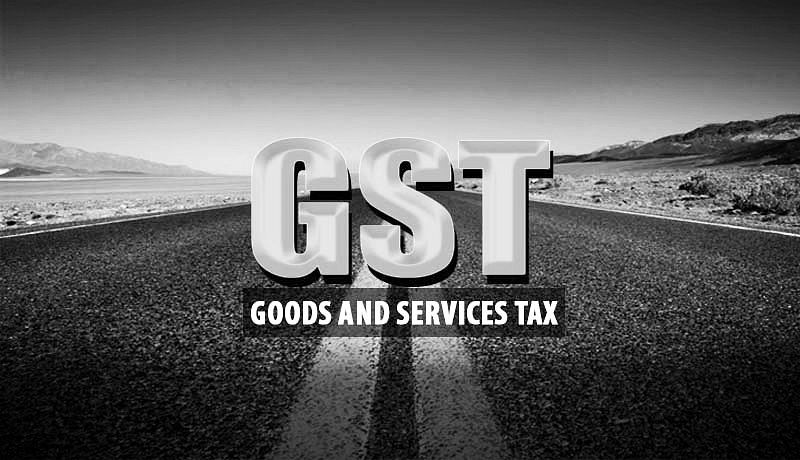Economy
GST Rate Structure Is Far From Settled; Fear Of Revenue Loss Leading To Frequent Changes
- What the changes in rates indicate is that the government is anxious about revenues.
- Anxiety is the greatest threat to GST, for it will force regular tinkering with the rate structure in order to squeeze what can be squeezed out of business.

Goods and services tax.
The repeated tinkering with goods and services tax (GST) rates – cigarette cesses went up last month, and SUVs and high-end cars could go up this month – is indicative of three things: one, the fine-tuning is not going to end anytime soon; two, far from being regressive, GST is becoming a progressive tax that should have the Left drooling; and, most, important, we are far from achieving a revenue-neutral rate. Rather, fear of revenue shortfalls in the short-run may be precipitating rate changes.
Such complexities should have been expected anyway. It was never going to be possible to force-fit nearly 1,500 commodities and services into the desirable three rate structures that experts wanted; worse, since the short-term objective of preventing any big jump in prices had to be combined with the need to prevent revenue losses, the chances were always that the GST Council would find ways to tax the upper segments more.
The cigarette cess, which hiked rates on sticks based on length and filter, is expected to yield nearly Rs 5,000 crore in additional revenue. It is not clear what the SUV/high-end car cess will yield, but the new net rate will surely exceed 50 per cent once the legislation is done, as against the current 43 per cent.
This was evident even before the GST rates were decided, since taxes on SUVs at the top end were attracting upto 53 per cent in total taxes, according to calculations made by research firm Jefferies. Apart from revenue considerations, GST would have been difficult to justify politically if the benefits were seen to go disproportionately to the rich in the form of net tax cuts.
With supply chains yet to be fully aligned to take advantage of the new structure, with new assessees being added every day to the GST Network (the total number is expected to rise to around 90 lakh or one crore by March 2018), and with the technology still to be fully tested as millions of invoices and returns get filed this month, it is still too early to breathe easy. The rollout of GST so far has been fairly glitch-free, but the scope for things to go wrong remains, especially when we add the new disruptions happening through frequent changes in rates.
The central kitty is already stretched, with the fiscal deficit for April-June hitting 81 per cent of the full year’s target. This means there is very little scope for major revenue shortfalls from GST, where too we must write off at least the second quarter (July-September) in terms of robust revenue growth. Several sectors reported weak growth in June and July.
The search for the revenue-neutral rate will thus continue for several more months, as actual revenues received are matched with pre-GST revenue receipts from groups of commodities.
The idea of the revenue-neutral rate was always flawed, for the whole idea behind implementing GST was to enhance revenues, and not merely maintain what came into the kitty earlier. The Centre has guaranteed a 14 per cent annual revenue growth to states, which means even in the short run, talk of revenue-neutral growth is bull. The Centre needs to generate more money by hook or by crook if its infrastructure investments are not to be cut in order to meet its obligations to states.
Another idea that is likely to go for a toss in the short run is the expectation that moderation in rates will lead to a rise in revenues as the tempo of economic activity picks up. But the government – and the GST Council – is clearly in no mood to wait for two birds in the bush if it can hold on to the one it had in hand before GST – and get it to lay an additional egg or two.
What the changes in rates indicate is that the government is anxious about revenues. Anxiety is the greatest threat to GST, for it will force regular tinkering with the rate structure in order to squeeze what can be squeezed out of business.
Support Swarajya's 50 Ground Reports Project & Sponsor A Story
Every general election Swarajya does a 50 ground reports project.
Aimed only at serious readers and those who appreciate the nuances of political undercurrents, the project provides a sense of India's electoral landscape. As you know, these reports are produced after considerable investment of travel, time and effort on the ground.
This time too we've kicked off the project in style and have covered over 30 constituencies already. If you're someone who appreciates such work and have enjoyed our coverage please consider sponsoring a ground report for just Rs 2999 to Rs 19,999 - it goes a long way in helping us produce more quality reportage.
You can also back this project by becoming a subscriber for as little as Rs 999 - so do click on this links and choose a plan that suits you and back us.
Click below to contribute.
Latest